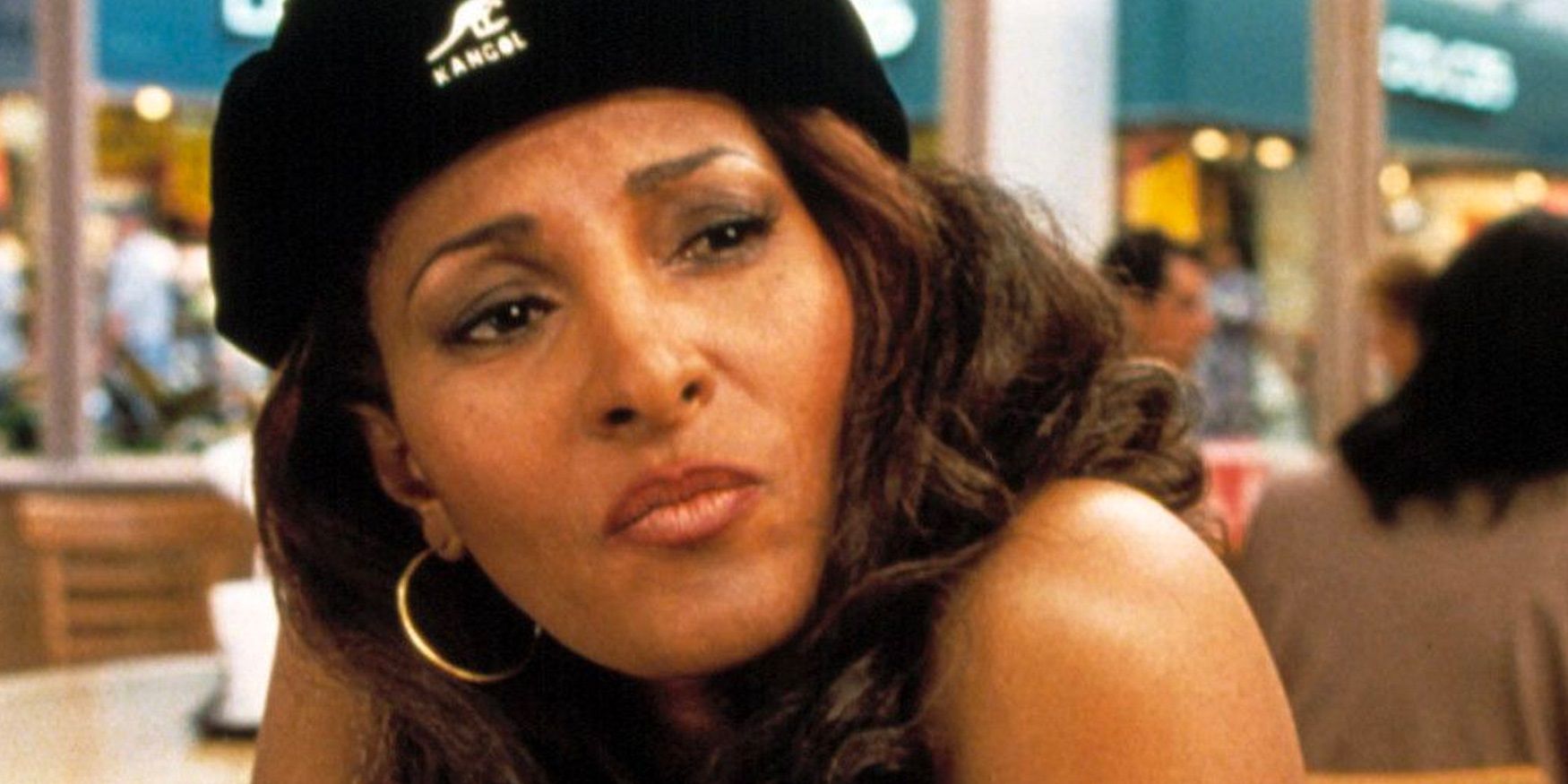Pam Grier recalls her troubles with Quentin Tarantino‘s dialogue on the set of Jackie Brown. Beginning in 1992 with the release of his heist-gone-wrong thriller, Reservoir Dogs, the writer-director quickly became recognized as one of Hollywood’s most talented filmmakers. Two years later, Tarantino went on to create what many would call his masterpiece, Pulp Fiction, winning the prestigious Palme d’Or as well as the Academy Award for Best Screenplay with Roger Avary. In a daring move, Tarantino chose to follow up Pulp Fiction with an adaptation of Elmore Leonard’s novel Rum Punch, and turned it into the taut Grier-led crime-thriller Jackie Brown.
Speaking with EW, Grier recalls her difficulty with Tarantino’s unique dialogue while filming Jackie Brown. The actor explains that while working in a scene opposite Samuel L. Jackson, she had to deliver a series of rapid-fire lines while descending a set of stairs. Grier feared that she would end up tripping and injuring herself. Read what the actor says below:
She has to speak fast with Sam Jackson’s Ordell. I said, ‘I don’t know how I’m going to speak that fast with Sam Jackson, walking down the steps, not looking at the steps. I’m going to kill myself!’ I said, ‘Quentin, I’m going to fall. Can we just finish with me lying down there on the steps saying I can’t keep up with this man?’ He talks so fast!”
Why Jackie Brown is Considered One of Tarantino’s Best
Released in 1997, Jackie Brown saw Grier in the leading role as a tough, no-nonsense gun-toting heroine. Both the film’s title and Grier’s casting made it clear that Tarantino was delivering an homage to the Blaxpoitation genre, a controversial style of Black American-centric films in the ’70s that had an impact on the director growing up. In that era, Grier made a name for herself as fierce and violent vigilante characters in several exploitation films, including Coffy, Foxy Brown, and Friday Foster.
Grier stars as Jackie Brown, a flight attendant who is caught smuggling money for gun-runner Ordell Robbie (Jackson). Bargaining for her life, she makes a deal with Ordell to trick the authorities to help him smuggle over a half-a-million dollars. However, Jackie seemingly has other plans as she attempts to get out from under Ordell and the ATF. Although Tarantino re-frames a key scene in a revealing perspective-shifting flashback, the film primarily adheres to a chronological timeline, a narrative structure rare for the filmmaker.
Other than Grier and Jackson, Jackie Brown included a star-studded cast that featured Robert DeNiro as Ordell’s on-edge friend Louis Gara, Bridget Fonda as Melanie Ralston, Michael Keaton as ATF agent Ray Nicolette, and Max Forster as bail bondsman Max Cherry in a role that rejuvenated his career. Both Grier and Forster earned Golden Globe nominations for their roles, with Forster also picking up a nod for the Academy Award for Best Supporting Actor. With Jackie Brown nearing its 30-year anniversary, perhaps audiences will revisit a film that may find itself overlooked in Tarantino‘s strong filmography.
Source: EW


